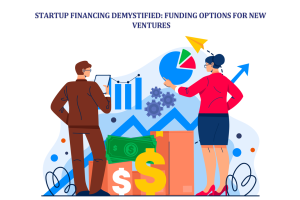The Role of MVP (Minimum Viable Product) in Startup Success

A product’s timely and economical release onto the market is essential for any startup. It takes time and money to build a complex product with every feature imaginable. The release of a minimal viable product (MVP) is a preferable strategy. Startups are able to boost their chances of success by iterating quickly and gathering actual consumer input from the beginning.
For early adopters, an MVP provides exactly the right amount of essential functionality. It requires little effort to produce and offers value in addition to solving an issue. MVPs are used by startups to test product concepts before making significant investments. Everything you require to increase the success of your startup about MVPs is covered in this blog article.
Describe an MVP
Startups and entrepreneurs use a tactical approach called an MVP (minimum viable product) to launch new products and services. An MVP’s primary objective is learning, not scale or income. Through real-world usage data, it allows the testing of product and business model ideas. Before devoting significant time and money to the product’s complete development, this offers priceless information for improving it. MVPs concentrate on providing a single, core client problem with exceptional solutions.
What Advantages Does an MVP Offer a Startup?
- Iterative methodology
Any number of iterations serve as facilitators. They facilitate user input gathering and assist the product team in getting to know users far better than they would with a waterfall-based management strategy. But they’re not “means to an end” in the manner that you may think of them. Customers have a substandard experience when features are moved around and left in weak shape. Customers won’t be able to continue using the product.
- Consumer opinions
Indications on the market fit will come from any early input that is feasible. In this manner, the development team will be able to deploy features that are helpful and meet consumer demands in the right way.The group runs the risk of being overly fixated on accepting every comment as gospel and failing to notice the true signals emanating from the marketplace. This may result in the settlement of individual customer issues rather than aiming for product-market fit. Customer feedback should not be used as a single source of useful information; rather, it should be used in a succession of ways to gather market signals.
- First, to determine a possible market
An MVP may help a startup get momentum as its first point of entry into the market before competitors. Since it offers them the lion’s share of the market, it’s a good concept.However, there are drawbacks as well, particularly if the product is inventive or imaginative. At this time, the potential clients are unaware of its advantages. As customers learn more about the product and its value and the market expands on its own, competition is likely to win out if a suitable solution is not offered to address the problem.
- Bringing in capital
An MVP is crucial for startups because of one additional factor. Investors and angel investors are more likely to take notice of your product or service if you have a validated MVP. The issue is that potential investors aren’t prepared to fund the concept. They frequently prefer to view the goods in person before making a purchase. You have a better probability of getting funding if you have an MVP.
- Verification
The MVP ought to contain the actual ability to solve the problem or be able to persuade people that they can solve it. Rapid and first iterations are necessary to test an idea that is not yet entirely economically feasible in the market for which it is being developed, but is still more than just a proof of concept.The Business Model or the Lean Canvas There are nine separate components that make up a canvas. At the very least, most startups are made up of faith-based decisions and convictions. It is necessary to carefully assess each one’s dependability.
- Allows Space for Development
Your product’s MVP is not its final version. It is an opportunity or spring board for you to take your idea to the market for testing and feedbacks. If you publish an MVP after changing the needed adjustments, then the pros and cons of your product can be determined. This implies that you can refine your product through constant iteration based on customer feedback.
- Permits Gradual Development of Products
The basis of agile MVP development lies in iteration and is based on the lean method. Build-measure-learn minimal viable product development process defines this. In an iterative process of development, one can create a product gradually, learning by trial and error, using valuable information, information, and feedback provided by users. Each the time of iteration, MVP is modifies, and the users will feel to turn back again for it. Like a phoenix that is revived from the ashes of its predecessor’s ideologies, it flies high over all contenders.
Conclusion
An MVP mindset is built on three pillars: agility, attentiveness, and speed. It promotes user-driven, ongoing improvement. In comparison, waterfall development is a conventional method that is sluggish, rigid, and based on presumptions from within. Thanks to the MVP model, many of the world’s most successful businesses have expanded. Startups may show their ideas to many possible partners at the same time by preparing an MVP, which gives them additional possibilities.
Author Bio:
Nouman Sabir is an insightful and creative content writer with over a year of experience. Upon completing his Bachelor’s degree, he embarked on a content writing career. In parallel to his writing pursuits, Nouman currently holds the position of Solution Architect – CTO at DigitilizeWeb, providing services like mobile app development, web design and development services UK, WordPress development, e-commerce solutions, etc. His distinct combination of creativity and technical expertise enables him to generate






